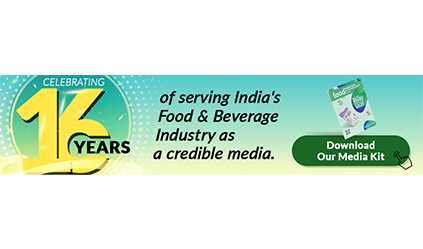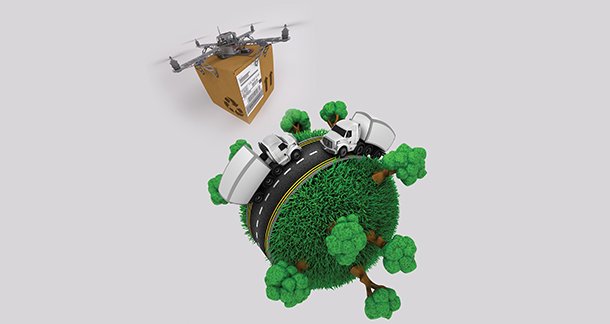The food industry is rapidly evolving, and the global focus on saving the planet for future generations has made sustainability a crucial factor in consumer decision-making and brand loyalty. Food brands must adapt their marketing strategies to align with these values as climate concerns grow and people become increasingly eco-conscious.
According to a recent Nielsen study, 73% of global consumers are willing to change their consumption habits to reduce environmental impact. Additionally, 49% of people have paid up to 59% more for products branded as sustainable and would do it again.
These statistics highlight the growing importance of sustainability in consumer decision-making, making it a critical factor in food marketing.
How can your food brand tap into this growing market of eco-conscious consumers? Here are nine strategies that can help your company reach the sustainable shopper.
1. Transparent Supply Chain Communication
Consumers increasingly want to know where their food comes from and how it is produced. The Transparency Imperative report shows that 75% of customers prefer switching to a brand that provides detailed product information.
Implement a transparent supply chain strategy by providing detailed information about ingredient sourcing and showcasing sustainable farming practices. Consider using QR codes on packaging to link to supply chain information on your website or mobile app.
2. Eco-Friendly Packaging Innovation
Packaging is your first connection with the consumer and your first chance to wow them. Innovative and sustainably designed packages are a strong selling point for many people in today’s consumer landscape. It can significantly impact your brand’s image in the long run.
Companies who develop biodegradable, compostable and easily recyclable packaging demonstrate a commitment to sustainability and a green future. Consider replacing plastics with compostable alternatives like cornstarch or sugarcane bagasse.
Your website and social media accounts can highlight your eco-friendly packaging to catch any sustainably-minded consumer’s eye.

3. Sustainability Certifications and Partnerships
Align your brand with recognized sustainability standards by pursuing relevant certifications such as organic, fair trade or Rainforest Alliance. Partner with environmental organizations for credibility and impact and participate in sustainability-focused industry initiatives.
Encourage sustainability-focused customers to collaborate with you on environmental initiatives such as tree planting, cleaning waterways or sourcing local, organic produce.
4. Eco-Friendly Shipping Solutions
While dry ice is a popular option for shipping ready-to-cook and microwave meals due to its low temperature, its classification as a Class 9 hazardous material means handlers could face frostbite or need hazmat training. Instead, recent technological developments find sustainable, economical, and safe alternatives to dry ice when shipping cold and frozen goods. Packets made with gel or foam can provide the same quality assurance without any danger.
Look for the most environmentally friendly shipping method for raw materials or finished products.
5. Digital Sustainability Storytelling
Leverage digital platforms to share your sustainability journey. Create engaging content showcasing sustainable practices and use social media to highlight your brand’s environmental initiatives.
Develop an interactive sustainability report on your website for customers who like in-depth information. Alternatively, create short-form videos for TikTok, which are 2.5 times more engaging than long-form varieties. Use trending sounds or expressions to reach younger, eco-conscious consumers.
6. Product Innovation Focused on Eco-Consciousness
Food waste is one of the top environmental concerns for experts around the world. However, products made from upcycled ingredients can make a dent in mitigating food waste. Better yet, this process is highly appealing to eco-conscious consumers. You may explore plant-based proteins as your base materials as one of many options. Paired with other sustainable ingredients and production methods, this is sure to be a win for both the world and the marketing of your business.
Developing and marketing products made from ingredients that would otherwise go to waste, such as imperfect produce or byproducts from food processing, can create a compelling sustainability narrative. Additionally, if you make these products more affordable and accessible for the average consumer, you’ll attract more loyal customers and grow your brand.

7. Community Engagement
Engage with your community to build brand loyalty and awareness. Host sustainability workshops or webinars, sponsor local environmental initiatives and collaborate with schools on educational programs about sustainable food.
You could also encourage sustainable behaviours among your customers through gamification. Develop a mobile app or social media campaign that rewards consumers for making eco-friendly choices related to your products. For example, you could use a points-based system where people earn rewards for properly recycling your packaging.
8. Carbon Footprint Labeling
Help environmentally conscious consumers make informed choices by providing clear information about your product’s carbon footprint. In one swoop, you can both educate your consumer base and position your brand as a leader on the environmentally-conscious landscape.
You can implement carbon footprint labels on your products and show the total greenhouse gas emissions produced during the product’s life cycle. Both of these innovative paths demonstrate transparency and environmental responsibility.
Finally, ensure credibility by partnering with a third-party carbon accounting firm to calculate and verify your products’ footprints. Display this information prominently on the packaging and marketing materials so that it’s benefits are front and center.
Embrace Sustainable Food Marketing Today
It is no longer an option to not seek sustainable food marketing strategies. If brands want long-term success, they need to listen to the voices of millions of consumers searching for eco-friendly options. Embracing transparency, innovation and genuine commitment to environmental stewardship enables your brand to meet consumer expectations and contribute to a more sustainable food system.



